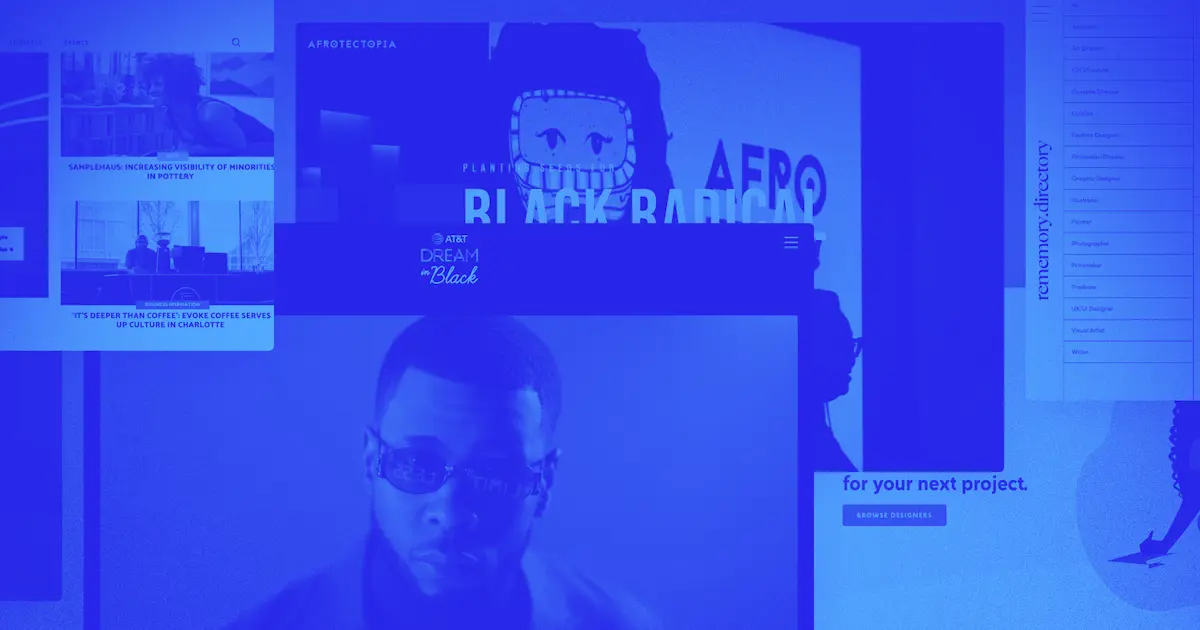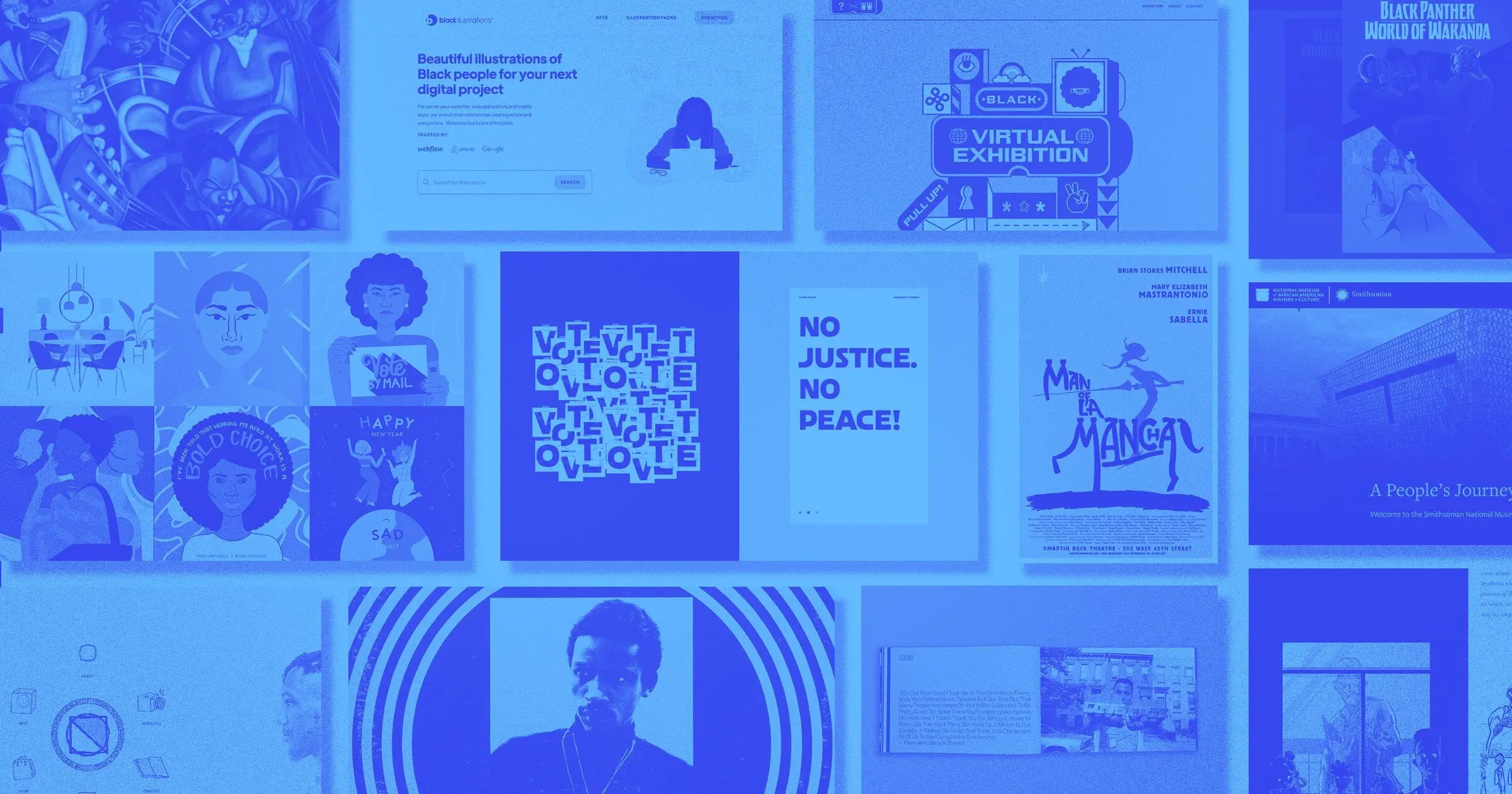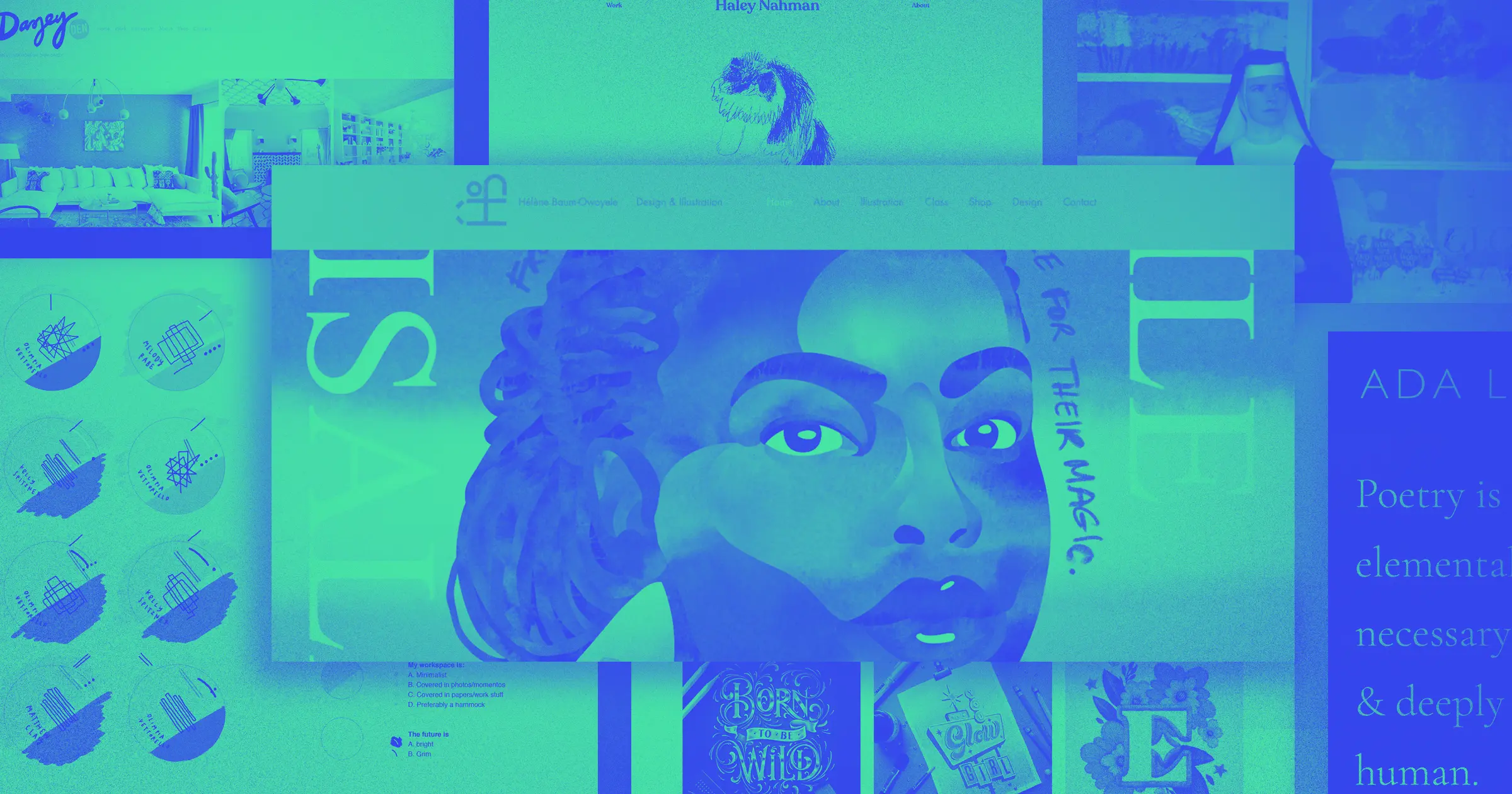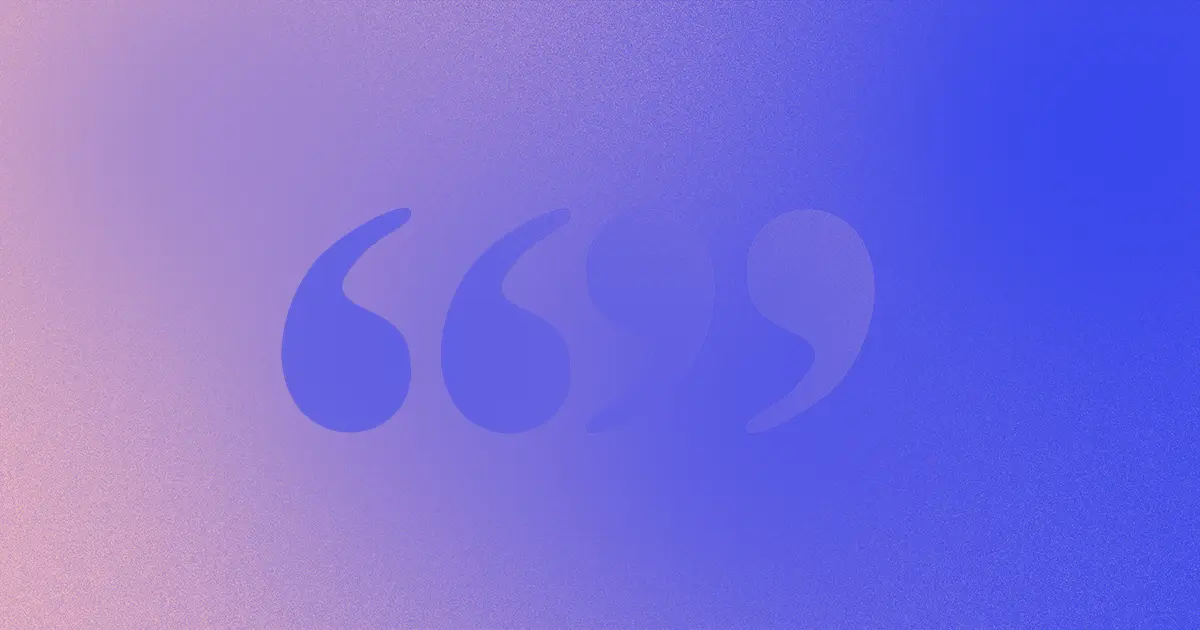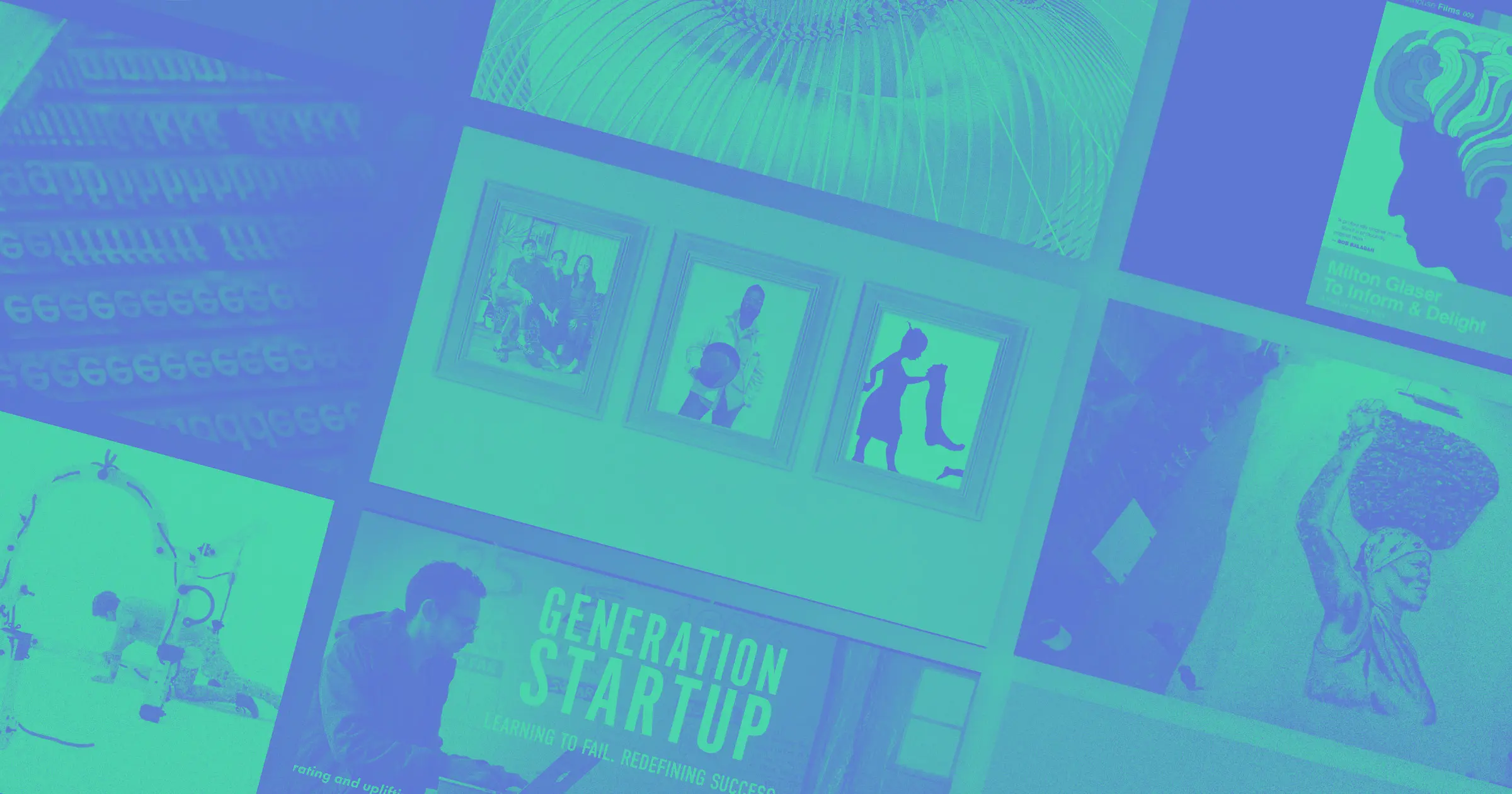Black Americans are responsible for some of the most impactful forms of creative expression in design, art, music, dance, and literature both in the United States and around the world.
Yet, according to Fast Company — only 3% of designers identify as Black. And when it comes to other creative fields like music, art, and film — Black representation is just as disproportionate.
This isn’t because of a lack of creativity in the Black community — in fact it’s far from it. Systemic racism and discrimination against Black Americans have made entering creative fields — and gaining positions of power within those fields — exponentially more difficult than it is for their white counterparts.
This makes it all the more vital to uplift Black creatives and artists, create platforms, increase Black representation, and fund and invest in their work now and in the future.
For this Black History Month, our team wanted to highlight projects and initiatives in the creative space that are doing just that. From job databases, to awards and spotlights, to initiatives that highlight Black History, creative contributions, and more — here are some of our favorites.
We’ll be donating all of the proceeds from our Black History Month Merch Store collection to two of the initiatives featured below; “Where are the Black Designers?” and the Black Artists and Design Guild. To check out the collections and support, click here.
Where are the Black Designers?

Where are the Black Designers? (WATBD) is a design advocacy organization for Black creatives founded by visual designers Mitzi Okou and Garrett Albury.
For the entirely volunteer-run team, WATBD’s mission is to “heal, support, amplify, and make space for the entire spectrum of Black creativity while also decolonizing design through education and wellness resources, events, partnerships, and collaborations.”
Through the organization, Black creatives are able to join the WATBD Slack community, attend events, find jobs, and access different resources to support their careers in creative and design-oriented fields. There are also spaces for allies to learn from the WATBD community and offer their support, knowledge, and time, as well as a job board for companies to directly post and recruit WATBD members.
Black Artists + Design Guild
Since 2018, Black Artists + Design Guild (BADG) has been home to a member-driven platform for Black creatives committed to building and promoting a more equitable and inclusive culture for independent Black artists, makers, and designers.
Founded by artist and activist Malene Barnett, BADG is home to three core initiatives. BADG Lab offers space and support for members looking to express their artistry through projects not limited by client constraints. BADG Lifestyle is a licensing and product development initiative, in collaboration with outside partners. BADG Education initiatives focus on providing greater exposure of Black artists and designers, often in the form of grants, residencies, and public programming.
BADG is currently accepting applications for artists and designers who concentrate in fine art, furniture design, ceramics, textiles, interior design, and architecture and self-identify as Black and members of the African diaspora.
Dream in Black from AT&T

Started in 2019, Dream in Black is a yearly initiative from AT&T that aims to showcase Black innovators, activists, artists, and entrepreneurs who uplift the Black community and are standouts in their own respective fields. This year’s Future Makers class features celebrities and influencers like Lori Harvey, Big Sean, J. Alphonse Nicholson, and Shangela, among others.
The initiative is multi-faceted — with contests and prizes for Black Future Makers, live performances by contestants, and a Rising Future Makers Program which gives participants grants and mentorship from those in the Future Makers Class of 2023.
Rememory Directory

Rememory is a term first coined in Toni Morrison’s seminal novel “Beloved” that refers to the act of returning to memories and past experiences over and over again. In the context of Rememory Directory, the term evolves to include the return to the centering of Black stories and experiences without the white gaze, along with the creatives and businesspeople who embody that.
Founded by Brooklyn-based designer and illustrator Mia Coleman, Rememory Directory is a directory and job board that exclusively features Black women and non-binary creatives who create work that specifically “claims their narratives, gazes and legacies in the global media.”
Rather than focus on a singular profession or type of work, Rememory Directory covers various roles including CEOs, creative directors, writers, photographers, designers, and much more.
Black Music Project
The Black Music Project is an online, interactive exhibition spanning artists and genres. They’re on a mission to harness the “power of graphics and storytelling to recognize, promote and preserve the idea that the history of Black music is the story of America.”
From antebellum call-and-response hymns and spirituals to modern day hip-hop — which is celebrating its 50th anniversary this year — in-depth exhibitions on the site detail the history and impact of Black people on music through short-form stories. Currently, it is home to three unique exhibits: The Roots of the Banjo, The Black History of Cowboys and Cowboy Music, and Portland: The Lost City of Jazz.
Founded by Christopher Fuller, owner of Griot’s Eye, the site also provides educational content on the impact 100+ Black artists have had on over 25 genres of music. Artist pages pair a playlist of select songs with key details and artist influences. Genre pages include brief historical summaries, list prominent musicians in the genre, and contain a curated playlist.
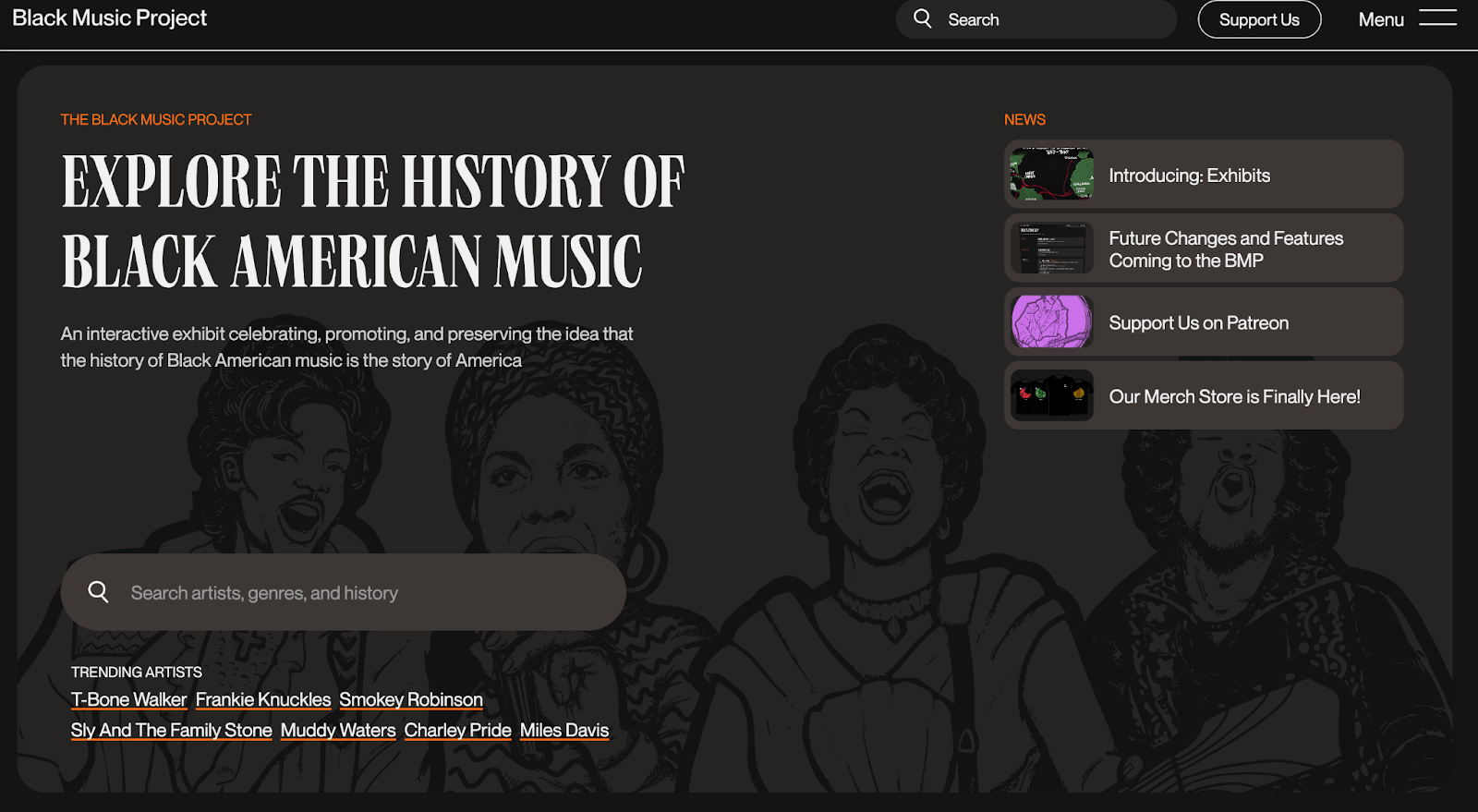
Afrotectopia
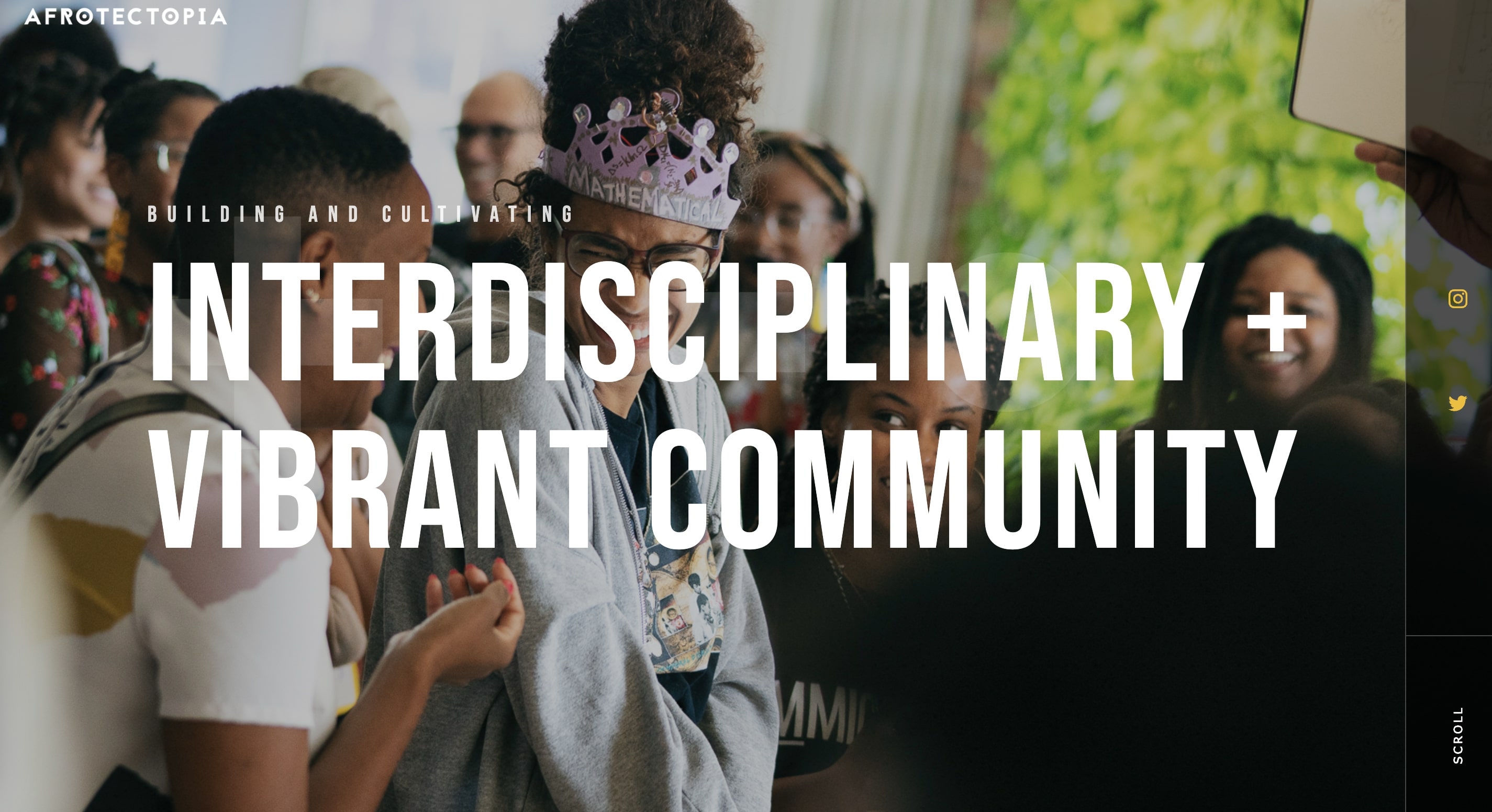
Founded in 2017 by NYU ITP graduate student Ari Melenciano, Afrotectopia sits at the intersection of art, design, technology, culture, and activism — creating space for Black creatives and socially-minded innovators to connect, build, and collaborate.
Since its inaugural festival six years ago, Afrotectopia has gone on to produce more festivals, an alternative adult school, an international fellowship program, a free summer camp for Black 7-12th graders, scholarships, and more — all designed to promote Black empowerment and Black agency.
Black Disabled Creatives
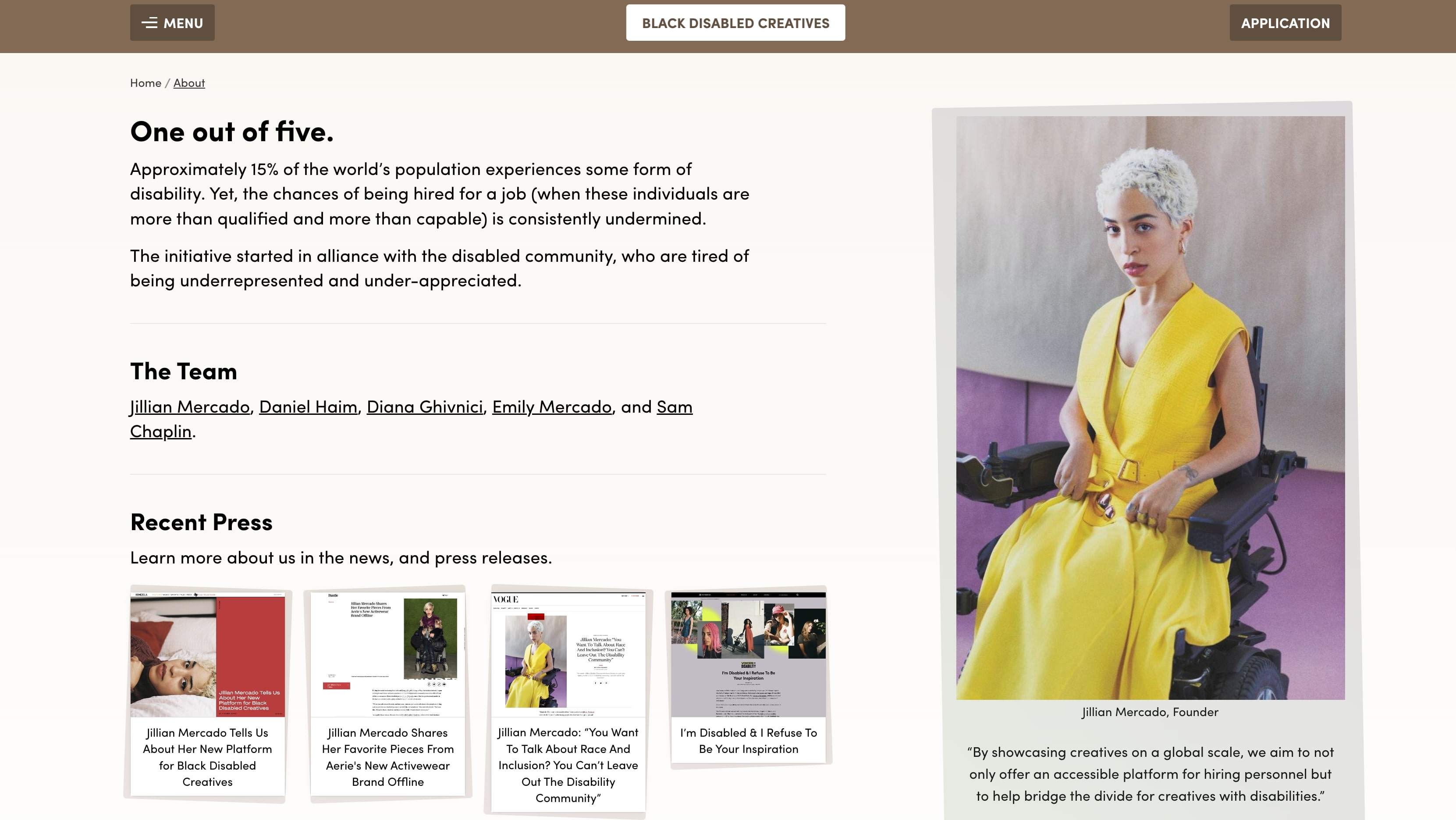
15 percent or 1 in 5 of the world’s population experiences some kind of disability. Despite how common disabilities are, it can often be a huge impediment to getting a job. When you couple disability with being Black or a person of color (POC), there’s often an even steeper hill to climb when it comes to finding employment or opportunities.
Created by actor and advocate Jillian Mercado, Black Disabled Creatives is an intersectional job board that provides a platform for the work of creatives who identify as Black or POC, and have a disability.
In an interview with Vogue, Jillian explained, “I wanted to create this list, so not only will it help to build communities within the disability community but making these connections can lead to conversations.” She also shared more on her vision: “I also wanted to give the opportunity to brands who, you know, are ‘talking the talk,’ but they should ‘walk the walk’ as well. My whole thing is that if you want to talk about race and inclusion, you can’t leave out the disability community.”
Technically Speaking
Over the course of his design career and in his current role as a UX Design Manager at LinkedIn, Harrison Wheeler has connected with talented, inspiring Black designers — ones he believed deserved a platform to share their expertise and advice.
To create space for the Black creative community, he launched his podcast, “Technically Speaking with Harrison Wheeler,” in 2020. BIPOC guests in design and tech discuss their career paths, stories of resilience and failure, their thought processes, and work. But “Technically Speaking” is more than a podcast; it’s a community for the next generation of Black creatives looking for professional opportunities, mentorship, in-person networking, and more.

The Block

In 2019, veteran creatives Davita Galloway, David “Dae Lee” Arrington, and David J. Butler founded Hue House, a Charlotte-based creative agency on a mission to “decolonize the marketing and advertising industry for more equitable storytelling.” In pursuit of more ways to support communities of color, they formed their nonprofit arm — The Block — dedicated to uplifting and propelling Black creatives.
The Block is a community for underserved artists and creative entrepreneurs of color, gathering Charlotte, NC members monthly for in-person events and international members daily online. It’s a space for creatives to connect, offer advice, and share job opportunities, as well as uplift and empower one another through thoughtful storytelling.
IllustratorHub

IllustratorHub is a directory that showcases Black illustrators and gives companies the option to hire talent directly from the site. This project was created by John Saunders — the creator of Black Illustrations and the founder of 5FourDigital — with the mission to “create MORE opportunities for black illustrators to showcase their work and be included in the design conversation.”
Since its creation, companies and organizations like Google, the Centers for Disease Prevention and Control (CDC) and the University of California have all hired illustrators directly from the site.
Support Black designers and creatives
From donating, to consuming content, to hiring talent and more — it’s vital to support, patronize, and give a platform to initiatives like the ones featured above.
We encourage you to take a closer look at these featured initiatives and projects and let us know about some of your favorites on Twitter, Instagram or Facebook.



















Build websites that get results.
Build visually, publish instantly, and scale safely and quickly — without writing a line of code. All with Webflow's website experience platform.


